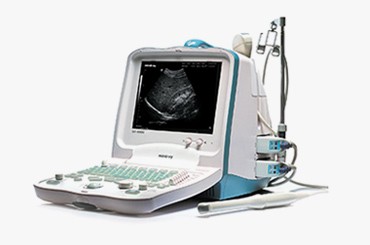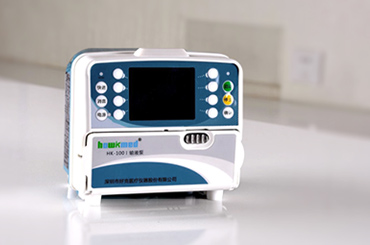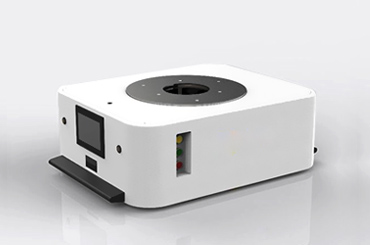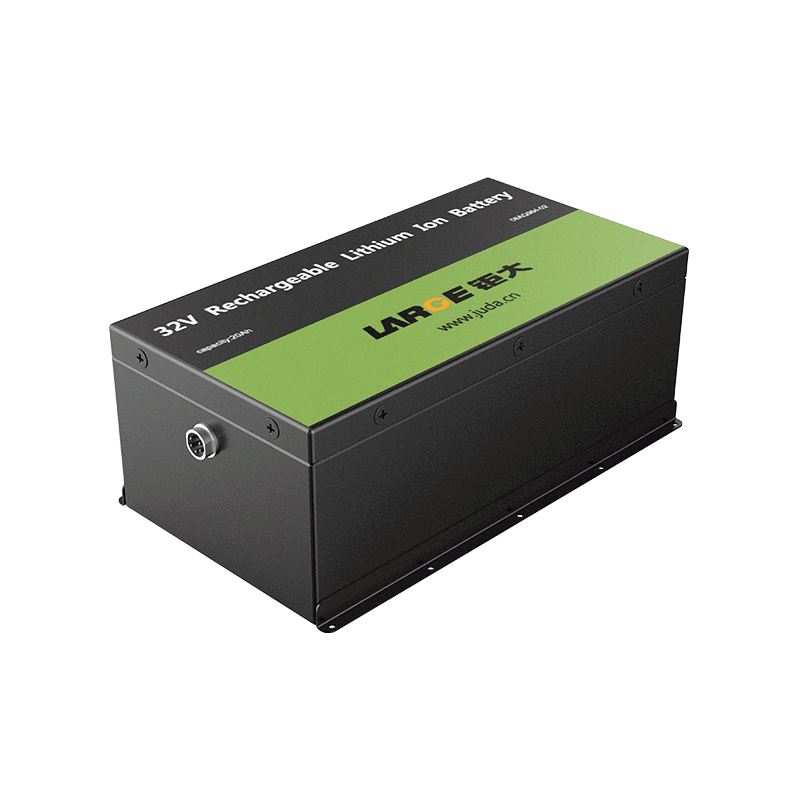-
Key Takeaways
-
Part 1: What is the healthcare AGV+
- 1.1 Overview of the healthcare AGV
- 1.2 Features of the healthcare AGV
-
Part 2: Why Lithium Batteries Are Ideal for Healthcare AGVs+
- 2.1 Benefits of Lithium-Ion Batteries in Healthcare Settings
- 2.2 Reliability and Safety Features for Medical Applications
- 2.3 Long Lifespan and Cost Efficiency Compared to Other Battery Types
-
Part 3: Best Lithium Battery Options for Healthcare AGVs+
- 3.1 LiFePO4 vs. Li-Ion: Key Differences and Advantages
- 3.2 Suitability of Li-Poly Batteries for Healthcare AGVs
- 3.3 Performance Metrics: Energy Density, Charging Speed, and Cycle Life
-
Part 4: Key Factors to Consider When Choosing a Medical AGVs Lithium Battery+
- 4.1 Power Requirements and Load Capacity of Healthcare AGVs
- 4.2 Charging Time and Operational Downtime
- 4.3 Cost Considerations and ROI for Healthcare Facilities
-
FAQ+
- 1. What makes lithium batteries safer for healthcare AGVs?
- 2. How do lithium batteries improve the efficiency of healthcare AGVs?
- 3. Can lithium batteries handle the high energy demands of healthcare AGVs?
What Are the Best Lithium Batteries for Healthcare AGVs
APR 14, 2025 Pageview:30
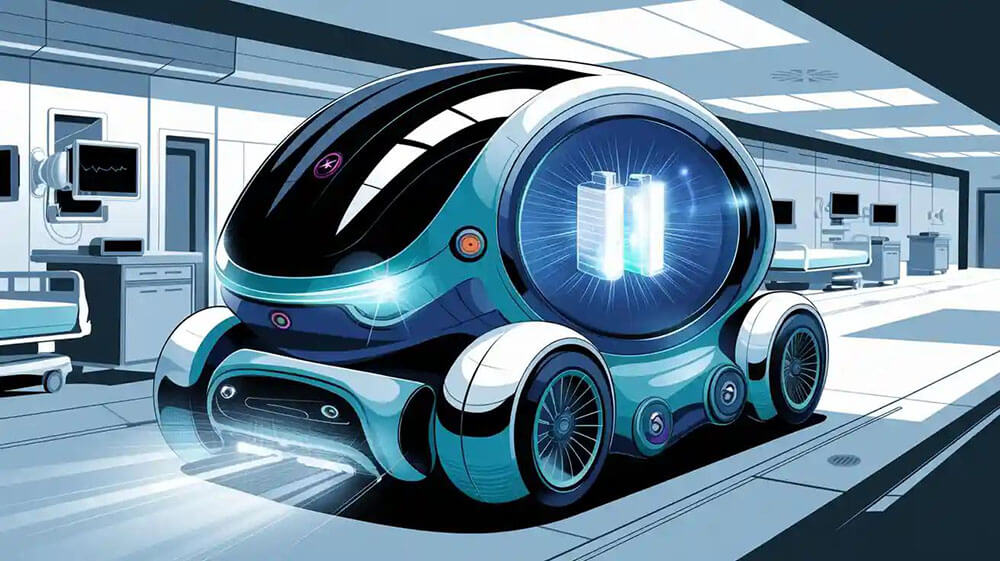
Lithium batteries have revolutionized the performance of healthcare AGVs, offering unmatched efficiency and reliability. LiFePO4 batteries, with an energy efficiency rate of 95%, outperform traditional lead-acid batteries, which only achieve 70%. Their fast charging times minimize downtime, while built-in safeguards reduce maintenance needs. These features make a healthcare AGVs lithium battery the optimal choice for hospital environments.
Key Takeaways
Lithium batteries, like LiFePO4, are very efficient and charge quickly. This makes them great for healthcare AGVs in hospitals.
Picking the right battery, such as LiFePO4 for lasting longer or lithium-ion for being smaller, is important for healthcare AGVs to work well.
Lithium batteries cost more at first, but they last longer and need less care. This saves hospitals money over time.
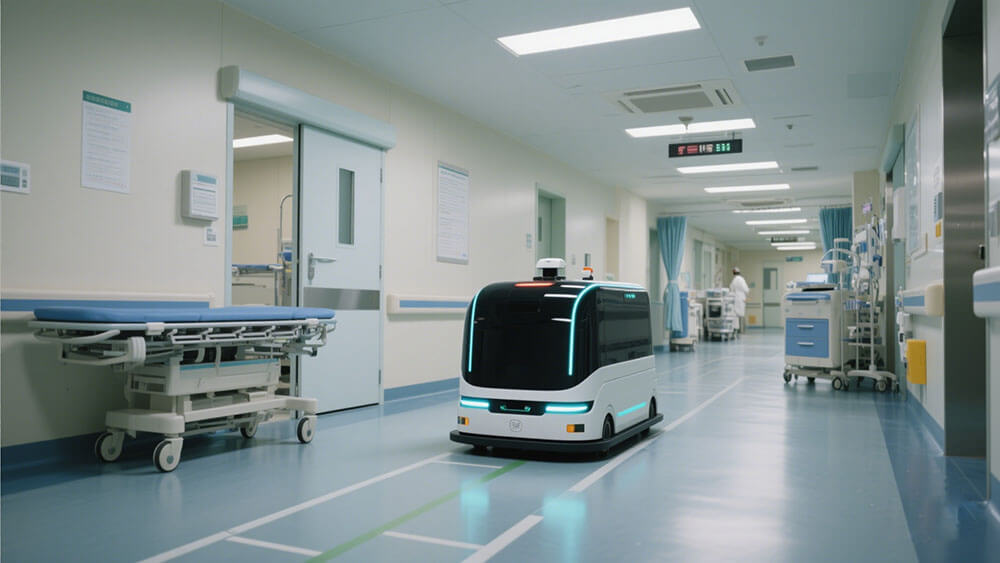
Part 1: What is the healthcare AGV
1.1 Overview of the healthcare AGV
A healthcare AGV, or Automated Guided Vehicle, is a robotic system designed to streamline logistics in healthcare facilities. These vehicles autonomously transport medical supplies, medications, and equipment across hospitals and clinics. By automating these tasks, healthcare AGVs reduce the reliance on manual labor, allowing healthcare staff to focus on patient care. They operate using advanced navigation systems, such as laser-guided sensors, to move efficiently and safely through hospital corridors.
Healthcare AGVs play a critical role in maintaining operational efficiency. They ensure timely delivery of essential items, which minimizes delays in patient treatment. Additionally, these vehicles contribute to a sterile environment by reducing human contact with transported materials. This feature is especially important in preventing contamination and maintaining hygiene standards in healthcare settings.
1.2 Features of the healthcare AGV
Healthcare AGVs come equipped with cutting-edge features that enhance their functionality and safety. These include:
Advanced Navigation Systems: Laser scanners and cameras enable precise movement and obstacle detection.
Safety Mechanisms: Emergency stop buttons, bumpers, and warning devices ensure safe operation around staff and patients.
Customizable Load Capacity: AGVs can handle various payloads, from lightweight medications to heavy medical equipment.
Compliance with Safety Standards: They adhere to regulations like ANSI/ITSDF B56.5 and EN ISO 3691-4, ensuring safe interaction with humans.
Benefit | Description |
|---|---|
Improved Efficiency | AGVs automate the transportation of medical supplies, ensuring timely delivery. |
Reduced Manual Labor | Automation decreases the need for staff to manually transport items, freeing them for other tasks. |
Enhanced Safety | AGVs help maintain a sterile environment, reducing contamination risks. |
These features make healthcare AGVs indispensable in modern healthcare logistics. They not only improve productivity but also enhance patient outcomes by ensuring that critical supplies are always available.
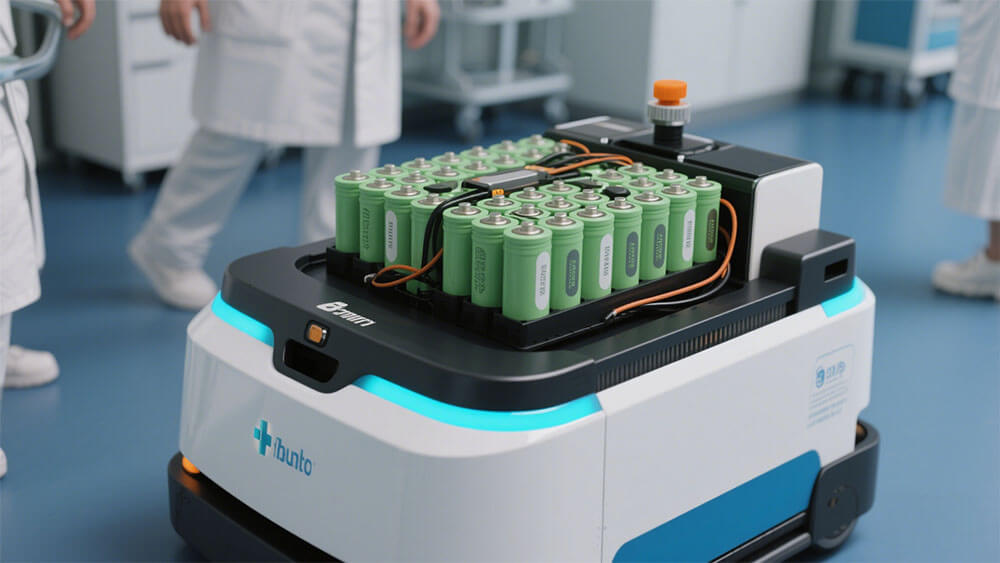
Part 2: Why Lithium Batteries Are Ideal for Healthcare AGVs
2.1 Benefits of Lithium-Ion Batteries in Healthcare Settings
Lithium batteries offer numerous advantages that make them the best lithium battery choice for medical environments. Their high energy density ensures consistent power delivery, which is critical for the uninterrupted operation of healthcare AGVs. Compared to traditional battery types, lithium batteries maintain voltage levels more effectively, enhancing the efficiency of power management systems in autonomous mobile robots.
In healthcare, time is a critical factor. Lithium batteries charge faster than alternatives, reducing downtime for automated guided vehicles. This efficiency allows AGVs to perform more tasks within a shorter timeframe, improving overall logistics. Additionally, lithium battery types are lightweight, which enhances the mobility of AGVs and reduces strain on their motors.
Benefit | Description |
|---|---|
Energy Density | Lithium batteries maintain voltage levels better than standard batteries, ensuring efficient power management. |
Charging Efficiency | Faster charging reduces downtime, enabling AGVs to operate more frequently. |
Reliability | Predictable performance ensures uninterrupted operation of medical devices and AGVs. |
2.2 Reliability and Safety Features for Medical Applications
Safety and reliability are paramount in medical settings. Lithium-ion batteries excel in both areas, making them ideal for critical applications. These batteries comply with stringent safety standards, such as IEC 60601-1 and UL2054, which ensure their safe use in medical electrical equipment. Over 90% of FDA-approved medical devices rely on medical-grade lithium batteries, highlighting their proven track record.
Lithium batteries also offer stable performance across various environmental conditions. Their ability to maintain consistent power output, even under demanding circumstances, ensures the reliability of healthcare AGVs. Furthermore, advanced battery management systems prevent overcharging and overheating, reducing the risk of malfunctions.
High energy density of up to 250 Wh/kg supports long-lasting performance.
Longevity with over 500 charge-discharge cycles minimizes replacement frequency.
Compliance with safety standards reduces incidents by over 40% in the last five years.
2.3 Long Lifespan and Cost Efficiency Compared to Other Battery Types
Lithium batteries provide a longer lifespan compared to traditional options like lead-acid or NiMH batteries. This extended lifespan reduces the frequency of replacements, lowering operational costs for healthcare facilities.
Although lithium batteries have a higher initial cost, their long-term savings make them the best lithium battery option for healthcare AGVs. Their high efficiency and reduced maintenance needs contribute to a lower total cost of ownership. For example, lithium-ion batteries are rated for over 500 charge cycles while retaining 80% of their original capacity, ensuring consistent performance over time.
Battery Type | Initial Cost | Long-term Savings |
|---|---|---|
Lithium-Ion | Higher | More economical |
Lead-Acid | Lower | Less economical |
Sodium-Ion | Moderate | Moderate savings |
By choosing best lithium battery types from Large Power, you can ensure that your healthcare AGVs operate efficiently while minimizing long-term expenses. This combination of durability and cost-effectiveness makes lithium batteries the preferred choice for healthcare logistics.

Part 3: Best Lithium Battery Options for Healthcare AGVs
3.1 LiFePO4 vs. Li-Ion: Key Differences and Advantages
When selecting the best lithium battery for healthcare AGVs, understanding the differences between LiFePO4 and lithium-ion batteries is crucial. LiFePO4 batteries excel in durability, offering a cycle life of 2,000 to 5,000 cycles, compared to lithium-ion batteries, which typically last 300 to 1,000 cycles. This makes LiFePO4 a cost-effective choice for long-term use in automated guided vehicles. However, lithium-ion batteries provide higher energy density, ranging from 160–270 Wh/kg, compared to LiFePO4's 100–180 Wh/kg. This higher energy density allows lithium-ion batteries to deliver more power in a compact size, making them ideal for space-constrained applications.
Battery Type | Energy Density (Wh/kg) | Cycle Life (Cycles) |
|---|---|---|
Lithium-Ion | 160–270 | 300 to 1,000(typically) |
LiFePO4 | 100–180 | 2,000 to 5,000 |
For healthcare AGVs, the choice between these two lithium battery types depends on your priorities. If longevity and reliability are paramount, LiFePO4 batteries are the better option. If compactness and higher energy output are more critical, lithium-ion batteries may be the preferred choice.
3.2 Suitability of Li-Poly Batteries for Healthcare AGVs
Li-Poly batteries, or lithium polymer batteries, offer unique advantages for medical AGVs. Their lightweight and flexible design make them suitable for autonomous mobile robots requiring compact and customizable power solutions. However, they fall short in terms of durability and cycle life compared to other lithium battery types. Li-Poly batteries typically have a shorter lifespan, making them less cost-effective for applications requiring continuous operation, such as in healthcare logistics.
While Li-Poly batteries can be used in healthcare AGVs, they are not the best lithium battery option for most scenarios. Their limited cycle life and higher maintenance requirements make them less reliable than LiFePO4 or lithium-ion batteries. For healthcare facilities prioritizing efficiency and long-term performance, Li-Poly batteries may not meet the demands of automated guided vehicles.
3.3 Performance Metrics: Energy Density, Charging Speed, and Cycle Life
Performance metrics play a vital role in determining the best lithium battery for hospital AGVs. Energy density, charging speed, and cycle life are key factors to consider. Lithium-ion batteries lead in energy density, offering up to 270 Wh/kg, while LiFePO4 batteries provide superior cycle life, lasting up to 5,000 cycles. Charging speed also varies among lithium battery types. For instance, lithium titanate batteries support a maximum charge rate of 5C, enabling rapid recharging, while lithium cobalt oxide batteries charge at a slower rate of 0.7–1C.
For medical AGVs, balancing these metrics is essential. High energy density ensures compact power storage, while fast charging minimizes downtime. A long cycle life reduces replacement frequency, enhancing cost efficiency. By evaluating these factors, you can select the best lithium battery to optimize the performance of your healthcare AGVs from Large Power.

Part 4: Key Factors to Consider When Choosing a Medical AGVs Lithium Battery
4.1 Power Requirements and Load Capacity of Healthcare AGVs
Understanding the power requirements and load capacity of healthcare AGVs is crucial when selecting the best lithium battery. These vehicles rely on efficient battery power to handle diverse tasks, from transporting lightweight medications to heavy medical equipment. Evaluating the drive system, such as differential or omnidirectional drives, ensures compatibility with the hospital's terrain. Additionally, the battery must support sufficient operational runtime to meet the AGV's workload without frequent recharging.
Aspect | Description |
|---|---|
Drive System | Evaluate options like differential drive, omnidirectional drive, or tracked drive based on terrain. |
Power Source | Ensure sufficient battery life and assess necessary charging infrastructure for operational runtime. |
Load Capacity | Confirm that the AGV can handle expected payloads safely without compromising performance or safety. |
Selecting the best lithium battery for healthcare AGVs involves balancing these factors to ensure uninterrupted performance and reliability.
4.2 Charging Time and Operational Downtime
Charging time directly impacts the productivity of automated guided vehicles. Lithium-ion batteries recharge in just 1–2 hours, significantly reducing downtime compared to lead-acid batteries, which require 8–10 hours. This rapid charging capability allows medical AGVs to sustain long shifts with minimal interruptions. For instance, facilities using lithium-ion-powered AGVs have reported a 20% increase in productivity due to reduced charging downtime.
Tip: Opt for high-performance chargers compatible with your battery type to further minimize downtime and enhance fleet efficiency.
By prioritizing fast-charging lithium batteries, you can maximize the operational efficiency of your autonomous mobile robots in medical settings.
4.3 Cost Considerations and ROI for Healthcare Facilities
Investing in the best lithium battery options may involve higher upfront costs, but the long-term financial benefits outweigh the initial expense. Lithium batteries offer a longer lifespan, reduced maintenance, and lower energy consumption compared to traditional alternatives. This results in a lower total cost of ownership (TCO) and a higher return on investment (ROI) for healthcare facilities.
Financial Aspect | Details |
|---|---|
Capital Investments | Comprehensive insights into initial setup costs for battery manufacturing. |
Operating Expenses | Breakdown of ongoing costs associated with production. |
Expected ROI | Analysis of return on investment for healthcare facilities. |
Net Present Value (NPV) | Evaluation of the profitability of the investment. |
By choosing advanced lithium battery solutions, healthcare facilities can achieve significant cost savings while ensuring the reliable performance of their medical AGVs.
LiFePO4 and Li-Ion batteries deliver unmatched reliability and efficiency for healthcare AGVs. Their adoption in over 60% of portable medical devices highlights their proven performance. LiFePO4 batteries achieve 95% energy efficiency, outperforming lead-acid alternatives. Large Power provide tailored solutions, ensuring your AGVs operate seamlessly while maximizing ROI for healthcare facilities.
FAQ
1. What makes lithium batteries safer for healthcare AGVs?
Lithium batteries include advanced safety features like overcharge protection and thermal management. These features reduce risks of overheating, ensuring safe operation in healthcare environments.
Tip: Always choose batteries certified for medical use to meet safety standards.
2. How do lithium batteries improve the efficiency of healthcare AGVs?
Lithium batteries charge faster and last longer than traditional options. This reduces downtime and ensures healthcare AGVs operate continuously, improving logistics in healthcare facilities.
3. Can lithium batteries handle the high energy demands of healthcare AGVs?
Yes, lithium batteries provide high energy density and consistent power output. This makes them ideal for handling the demanding tasks of healthcare AGVs without performance issues.
Note: Regular maintenance of the battery management system ensures optimal performance.
Leave Message
Hottest Categories
-
Hottest Industry News
-
Latest Industry News




